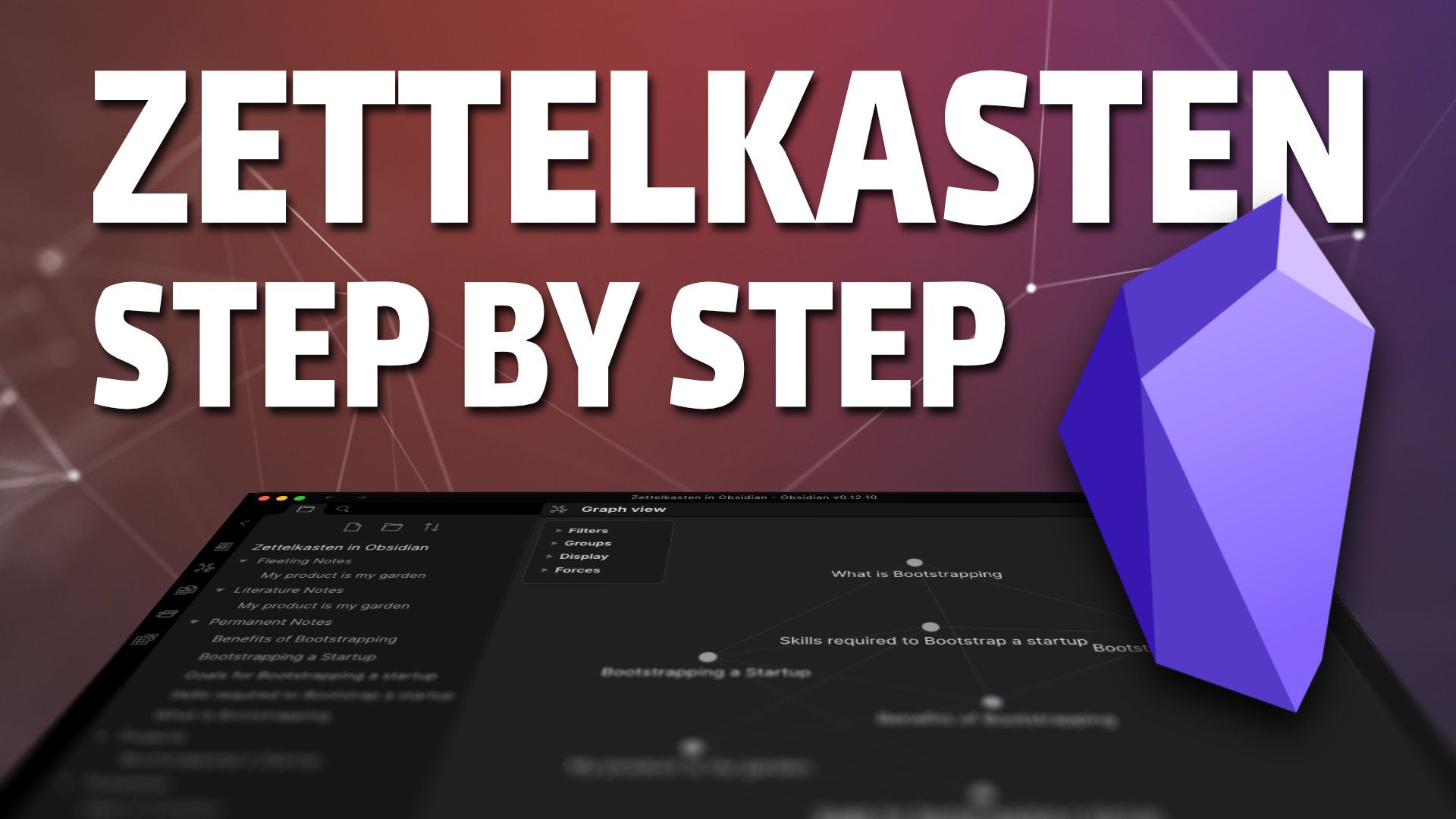Using the zettelkasten note-taking method in Obsidian

In this article, we will discuss how to apply the Zettelkasten method in Obsidian, a markdown editor that allows you to connect notes together using linked thoughts. The Zettelkasten method involves a system of note-taking which includes fleeting notes, literature notes, and permanent notes. These notes get linked together to create new ideas and insights, serving as a base for your projects, including blog posts and YouTube scripts.
Setting up Obsidian
- Create folders for the different types of notes: fleeting notes, literature notes, and permanent notes.
- Enable the templates core plugin in Obsidian's settings and set up a folder for templates.
- Create smart note templates to streamline the process of creating new notes.
- Design your Map of Content (MoC) to outline various topics for a given theme in your notes.
Creating Notes
- Fleeting Notes: Capture ideas, highlights, or notes from different sources (web articles, videos, books).
- Literature Notes: Process your fleeting notes and add your own thoughts and insights based on the source material.
- Permanent Notes: Organise your literature notes into a coherent and interconnected knowledge base that you can reference in the future.
Graph View
Obsidian offers a graph view that shows the interconnectedness of your notes, helping you identify gaps and find associations in your understanding.
Writing a Blog Post From Your Notes
- Create a new folder for your project, such as a blog post or YouTube script.
- Use your permanent notes as a source of inspiration and outline your project.
- Create drafts, using your permanent notes as a reference point to help you get going quickly.
- Edit and refine your drafts until your work is ready for publishing
Conclusion
Utilising the Zettelkasten method in Obsidian can help build a consistent and comprehensive knowledge base that you can easily draw from when working on projects. This approach promotes deeper understanding and better organisation of your ideas.
If you liked this post and want to learn how to improve your own ability to recall the insights and stories from what you read, then consider checking out my book Atomic Note-Taking.


